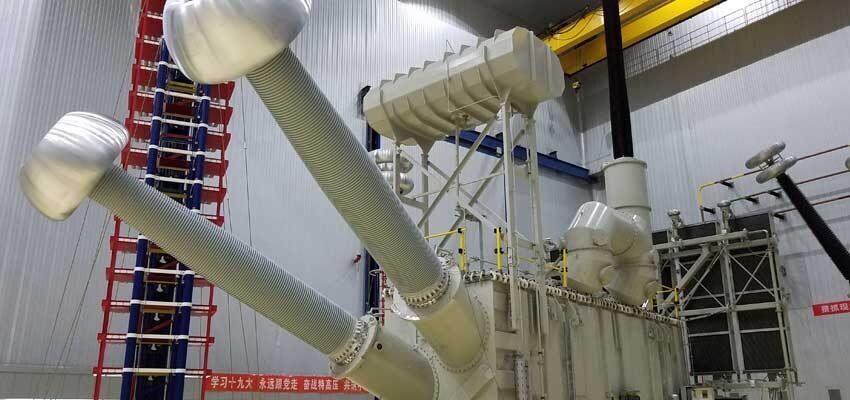
Winding design based on the hot spot temperature rise of a ±1,100 kV HVDC converter transformer
Abstract This paper briefly introduces the world’s first ±1,100 kV HVDC transmission project, focusing on the winding design of a converter transformer that was constructed...
byTan CHONG, Xu TAO, Xu LIANHUAN, Wang MINGSHENG

Abstract
This paper briefly introduces the world’s first ±1,100 kV HVDC transmission project, focusing on the winding design of a converter transformer that was constructed for the project, based on the hot spot temperature rise. The winding temperature rise was first measured during the initial design of the transformer. Then the design of the oil channel was improved and the conductors arrangement was optimized. By changing the oil flow in the line winding and the distribution of eddy-current losses at the winding end, design margin for winding hot spot temperature rise was ensured. Finally, an advanced fibre-optic temperature measurement technology was used to measure the hot spot temperature rise, ensuring the operating life of the converter transformer.
Keywords: ±1,100 kV HVDC, converter transformer, hot spot, temperature rise
1. Introduction
In recent years, China has made great efforts to develop and construct ultra-high voltage (UHV) AC/DC transmission projects. Especially for DC transmission projects, China has continuously been in the forefront of world’s power transmission and transformation technologies. As transmission voltage and transmission distances are becoming higher and higher, the power transmission capacity is reaching new records repeatedly. Currently, the world’s first ±1,100 kV HVDC transmission project is under construction, which runs from Changji in Xinjiang province in the west to Guquan in Anhui province in the east, with 3,283.94 km in length, ±1,100 kV rated voltage and 12 GW DC transmission capacity, becoming the least expensive, the most economical and most efficient power transmission in the world. It is a technology-leading and innovative project. The project is scheduled to be completed and put into operation in December 2018.
The DC transmission project adopts a bipolar DC system, which consists of two complete monopoles, with each complete monopole consisting of two 12-pulse converter units in series. Compared to another transmission project operated in China, which is the largest transmission project in the world with ±800 kV/10 GW, the transmission voltage of Changji-Guquan ±1,100 kV HVDC project has been increased by 37.5% while transmission capacity has been increased by 20%. The matching converter transformer adopted the single-phase double-windings type and with capacity of 607.5 MVA, it posed great challenges on designing and manufacturing. How to control the leakage magnetic and winding hot spot temperature rise after the capacity increase was the key question for the technology to resolve.
A converter transformer is an important piece of equipment in an HVDC transmission system, and its heating and cooling is a very complicated process. Therefore, it is very difficult to obtain the accurate value of the temperature rise of the winding hot spot in its actual operating conditions because of many influencing factors, such as the boundary conditions by the metal structure, the size and distribution of leakage flux, losses to be dissipated, heat convection transfer coefficient, oil flow distribution, and other important factors.







